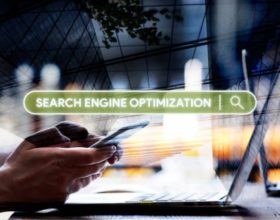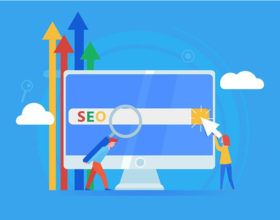6 Factors That Affect the Speed and Usability of Your Website
 It’s one thing to make a site that’s pretty—it might conform to modern standards of “good” design, stand out as a unique entry in your industry, and have an aesthetic appeal to your target demographics—but that doesn’t necessitate that your site will be functional. As much as good design can make a positive impression on your user base, it’s more important that your site is cleanly functional—and that means your site operates fast, and in the way you intend it to be used.
It’s one thing to make a site that’s pretty—it might conform to modern standards of “good” design, stand out as a unique entry in your industry, and have an aesthetic appeal to your target demographics—but that doesn’t necessitate that your site will be functional. As much as good design can make a positive impression on your user base, it’s more important that your site is cleanly functional—and that means your site operates fast, and in the way you intend it to be used.
How can you do this?
Speed and Usability
There are a number of strategies you can pursue to make sure your site is both fast and usable:
- Choose the right type of hosting. There are many types of hosting options to choose from, including both dedicated and cloud hosting. Each have their own advantages and disadvantages, and different hosting providers will be able to offer you different levels of service. For example, some might offer increased redundancy and safety measures to ensure that your data is kept safe. Some might offer faster rates of connection so your site downloads faster on users’ browsers. Going with a cheap option may seem like a good idea to save some money, but consider how your choice is going to affect your overall user experience.
- Format your images properly. One of the most common reasons for site slowdown is improperly formatted images. Why? Because images are large files. They occupy the majority of a website’s data, so if they aren’t efficiently formatted, they’re going to take a long time to load. For starters, your images should be in a readable, standard format—JPG, GIF, and PNG files are all good bets here. On top of that, it’s a good idea to reduce your image file size as much as possible without sacrificing the quality. Doing this will allow you to keep all your images while still maximizing loading speeds.
- Avoid clunky interactive features. Run checks on all the features and functions of your website, and see how they perform. Obsolete code, like Flash, or unnecessarily complex functions could take a long time to load—or might be fully incompatible with some types of devices. All your features should load quickly and operate smoothly—if they can’t, you shouldn’t be using them.
- Minimize how much content loads at once. This is a good idea for any website. If you include too much content in the form of images, text, and other features on one page, you could end up expanding the sheer file size and compromising loading speeds. Using a gradually loading infinite scroll feature or a page-by-page gallery are two convenient ways around this.
- Use a caching plugin. Instituting some kind of caching plugin or caching feature can work wonders for your overall site load times—especially for returning visitors. Caching plugins work by storing certain bits of information about your website in a user’s browser, so they can be easily recalled the next time the user visits the site. This can shave seconds off the average user’s page loading time, as long as you’re using the plugin effectively. As a general rule, you’ll want to stick with the default settings.
- Ensure cross-platform compatibility. You’ll also need to run some forms of cross-platform compatibility if you want to ensure your website is working effectively. These days, there are hundreds of devices, from laptops and tablets to smartphones, and dozens of different browsers that users can use to access your website. Your site needs to operate smoothly and efficiently, no matter what type of device or what type of browser a user is using—so run a test on many combinations to check your work.
What It’s All About
Design alone can’t help you make a good first impression, and it certainly can’t help you retain your audience. If your page takes longer than a second or two to load, even on a mobile device, you might already lose your audience’s attention or respect. If your site is supremely functional, users might not explicitly notice, but they’ll certainly notice if it’s slow, clunky, or non-functional. On top of that, having a faster, more functional site can boost your rankings in search engines! You owe it to yourself, your brand, and your users to do what you can to make your site cleaner and faster.






